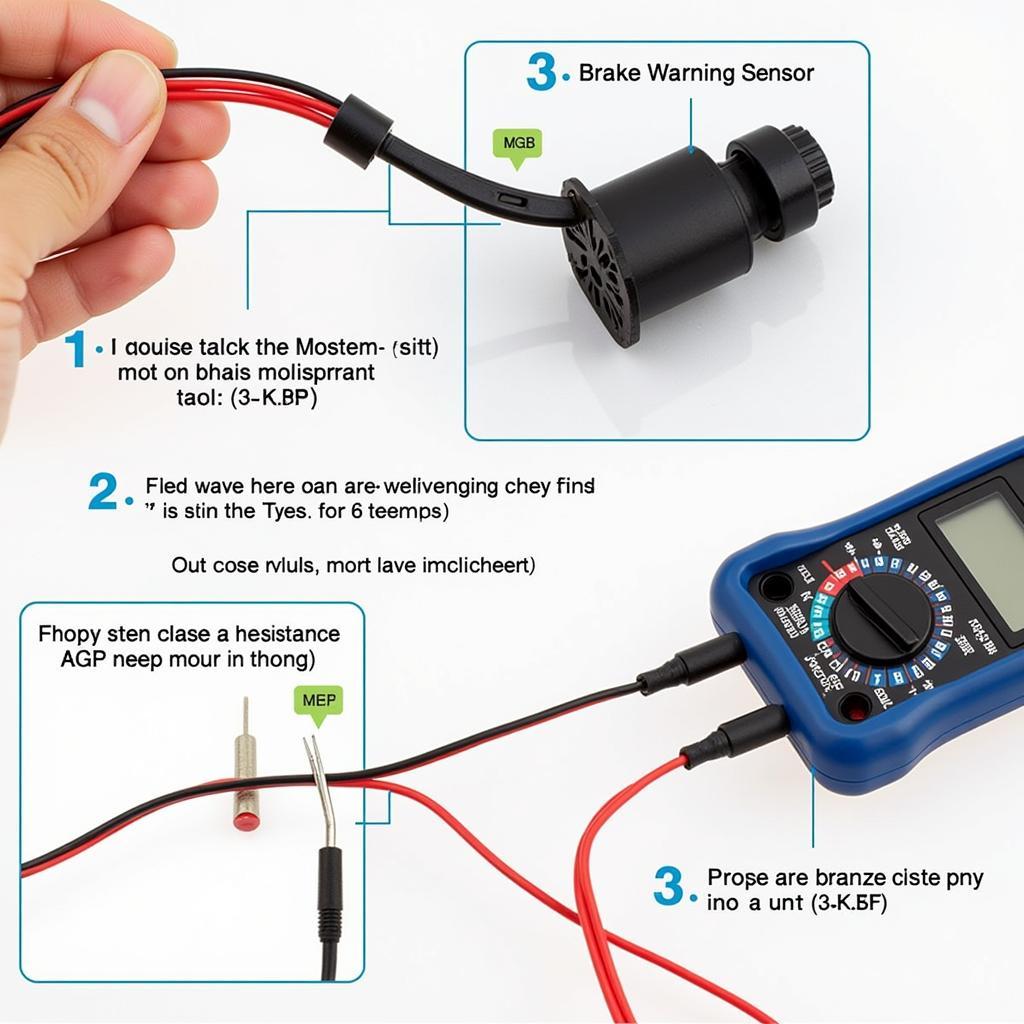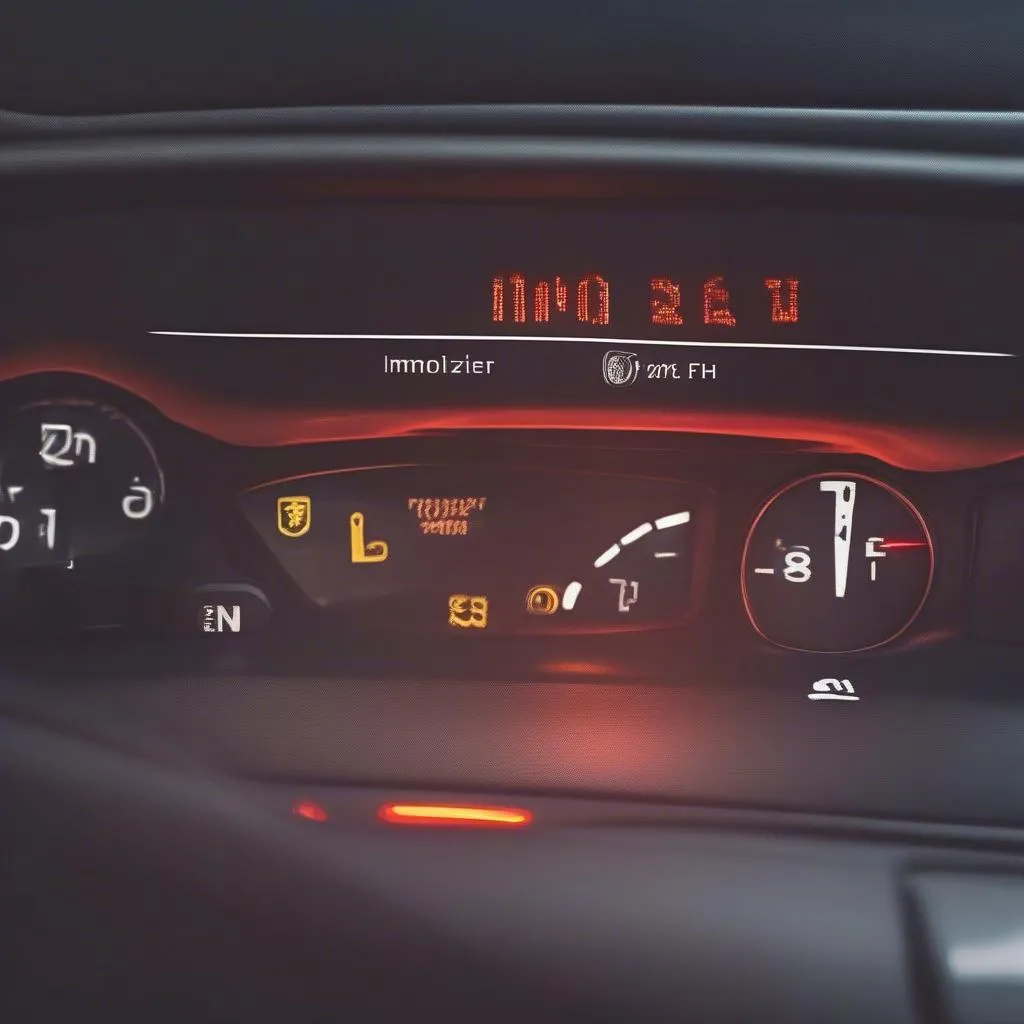The 05 International 4200 brake warning sensor can be a tricky issue to diagnose and fix. This article provides a comprehensive guide for troubleshooting and resolving problems related to this sensor, offering insights for both DIY enthusiasts and professionals. We’ll cover common causes, diagnostic procedures, and potential solutions to get your International 4200 back on the road safely. Knowing how to address these issues is crucial for maintaining optimal braking performance and overall safety. For more information on warning lights, you might find this helpful: seat leon exhaust warning light.
Understanding the 05 International 4200 Brake Warning Sensor System
The brake warning sensor in your 05 International 4200 is a critical component of the braking system. It’s designed to alert the driver to potential problems, such as low brake fluid levels, worn brake pads, or issues with the ABS system. Ignoring these warnings can lead to significant safety risks and potentially costly repairs. This system includes several components working together, including the sensor itself, wiring harnesses, and the dashboard warning light. A malfunction in any of these areas can trigger the warning light.
Understanding how these components interact is essential for effective troubleshooting. The sensor monitors various parameters related to brake function and sends signals to the vehicle’s electronic control unit (ECU). The ECU then activates the warning light on the dashboard if a problem is detected.
Common Causes of Brake Warning Sensor Issues
Several factors can trigger the brake warning light in your 05 International 4200. One of the most common culprits is low brake fluid. A leak in the brake lines or a worn master cylinder can cause the fluid level to drop, activating the sensor. Worn brake pads are another frequent cause. As the pads wear down, the sensor detects the change in pressure and illuminates the warning light. Issues with the ABS system, such as a faulty sensor or wiring problem, can also trigger the warning light.
Less common causes include a malfunctioning brake warning sensor itself, damaged wiring harnesses, or a problem with the instrument cluster. Identifying the root cause is the first step towards effective repair. Sometimes, a simple visual inspection can reveal the issue. For example, checking the brake fluid reservoir can quickly determine if the fluid level is low.
Diagnosing the Problem: A Step-by-Step Guide
- Check the Brake Fluid: The first step is to check the brake fluid level in the reservoir. If it’s low, top it off and monitor the level to see if it drops again, indicating a potential leak.
- Inspect the Brake Pads: Visually inspect the brake pads for wear. If they are thin or worn down to the metal, they need to be replaced.
- Check the ABS System: If the brake fluid and brake pads are fine, the next step is to check the ABS system. This may require specialized diagnostic tools to read the fault codes stored in the ECU.
- Inspect the Wiring: Carefully examine the wiring harness connected to the brake warning sensor for any signs of damage, corrosion, or loose connections. A damaged wire can interrupt the signal and trigger the warning light. The emissions warning light can also be a related issue. Check out more info here: emissions warning light seat leon.
- Test the Sensor: If all other components check out, the brake warning sensor itself might be faulty. A multimeter can be used to test the sensor’s resistance and ensure it’s functioning correctly.
 Testing the Brake Warning Sensor with a Multimeter
Testing the Brake Warning Sensor with a Multimeter
“Regularly inspecting your brake system and addressing warning lights promptly can prevent minor issues from escalating into major and costly repairs,” advises John Miller, a seasoned automotive electrical engineer with over 20 years of experience.
Remote Diagnostics and Programming Solutions
Modern technology allows for remote diagnostics and programming of vehicle systems, including the brake warning sensor. This can be a convenient and cost-effective solution for certain issues. Specialized software and hardware can be used to access the vehicle’s ECU remotely, diagnose problems, and even perform software updates or calibrations. This approach can significantly reduce downtime and eliminate the need for a physical visit to a repair shop in some cases. If your Seat Leon is experiencing warning light issues, this resource might help: seat leon fr exhaust warning light.
“Remote diagnostics is transforming the automotive repair industry, allowing us to quickly and efficiently address issues without requiring the vehicle to be physically present in the shop,” says Sarah Johnson, a leading expert in remote automotive diagnostics and programming.
Conclusion
Addressing the 05 International 4200 brake warning sensor promptly is vital for ensuring safety and preventing further damage to your braking system. By understanding the system, common causes of issues, and following the diagnostic steps outlined in this article, you can effectively troubleshoot and resolve problems related to the brake warning sensor. Don’t hesitate to seek professional help if needed, especially for complex issues requiring specialized tools or expertise. Remember, maintaining a properly functioning brake system is paramount for your safety and the safety of others on the road. Need help with a DPF warning light? Check this out: seat leon fr dpf warning light.
FAQ
- What does the brake warning light indicate? It indicates a potential problem with the braking system, such as low fluid, worn pads, or an ABS issue.
- Can I drive with the brake warning light on? It’s highly discouraged. Driving with a brake warning light on can be dangerous.
- How often should I check my brake fluid? Check your brake fluid level at least once a month.
- How much does it cost to replace a brake warning sensor? The cost varies depending on the specific sensor and labor rates.
- Can I replace the brake warning sensor myself? Yes, with the right tools and knowledge, you can replace it yourself.
- What tools do I need to diagnose brake warning sensor issues? A multimeter, diagnostic software, and basic hand tools are often needed.
- Can remote diagnostics fix all brake warning sensor problems? While remote diagnostics can address many issues, some may still require physical repairs. You might also find this article about engine warning lights useful: engine warning light seat leon cupra.

